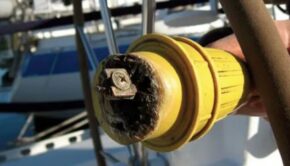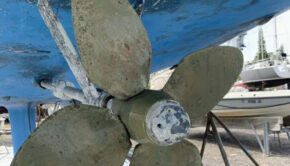Preventing electric shock at the dock
Published on July 20th, 2020
When two people recently died due to electrocution while swimming at a marina at Lake Pleasant in Arizona, it was a fatal reminder that this threat continues to plague the boating community.
Alarms, no matter how accurate, are no substitute for strict adherence to the safe practices detailed in this Practical Sailor report:
The human body runs on electricity and if you overload the nervous system with an external field, everything goes haywire. Every year several people die because they go swimming near a dock, a wiring fault creates an electric field in the water, and their muscles freeze. It is called Electric Shock Drowning (ESD).
A victim of ESD doesn’t always appear to struggle, because they physically can’t. Their diaphragm is paralyzed, their swimming muscles incapacitated, and they simply sink. This danger is regarded as almost exclusively limited to freshwater-although no one should ever consider a saltwater marina to be free of electrocution risk. The human body is more conductive than freshwater, but less conductive than salt water. Because current seeks the least resistant path, the preferred electrical path in freshwater is your body, while in saltwater-except in unusual circumstances (metal prosthetics, for example)-it is water.
How to Avoid ESD:
Never swim near docks with AC power. Encourage your marina to test periodically for leakage.
• When you go for a sail, switch off the AC power breakers onboard and at the shore power pedestal and unplug the power cord.
• Move your boat at least 150 yards from any marina before entering the water to perform maintenance or to scrub the bottom. In freshwater, the power gradient can extend as much as 150 feet from the fault.
• If the dock is used by swimmers, install only low voltage lighting and no power outlets.
• Never use 120 volt power tools from a tender or float, or even in a way where wet conditions can create a ground through you. Using power tools near freshwater or saltwater can be lethal. The seawater becomes an excellent coupler from the sailor to ground, and wet hands make a good connection to the power tool.
• Always use GFI protection. If there’s none in the circuit, install a GFI pigtail.
• If you must swim in a saltwater marina, unplug yours and nearby boats and turn off pedestal breakers and battery switches. This should eliminate the remote risk of a severe fault.
• Although swimming pool electrocutions are extremely rare (all pools equipment must meet strict safety codes), accidents can happen. Never swim if a portable 120-volt pump is in use.
• Never swim in or near freshwater marinas.
• Do not swim around freshwater docks that have electrical equipment.
• Install galvanic isolator in all shore power systems. This provides a barrier between the shore ground and hull ground.
• Install a solar system on your boat, eliminating the need for shore power.
Full report… click here.









 We’ll keep your information safe.
We’ll keep your information safe.